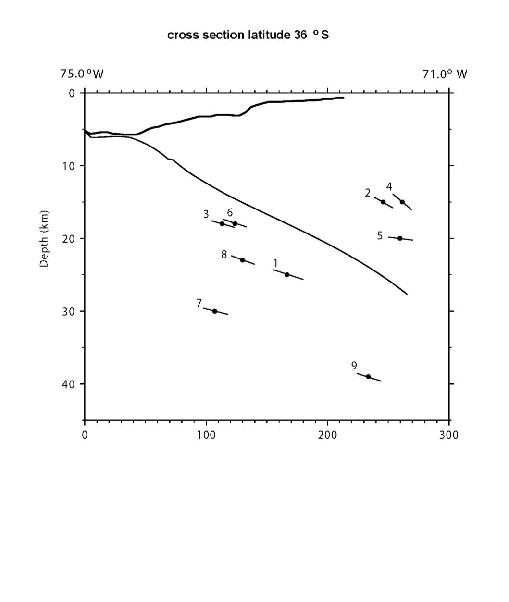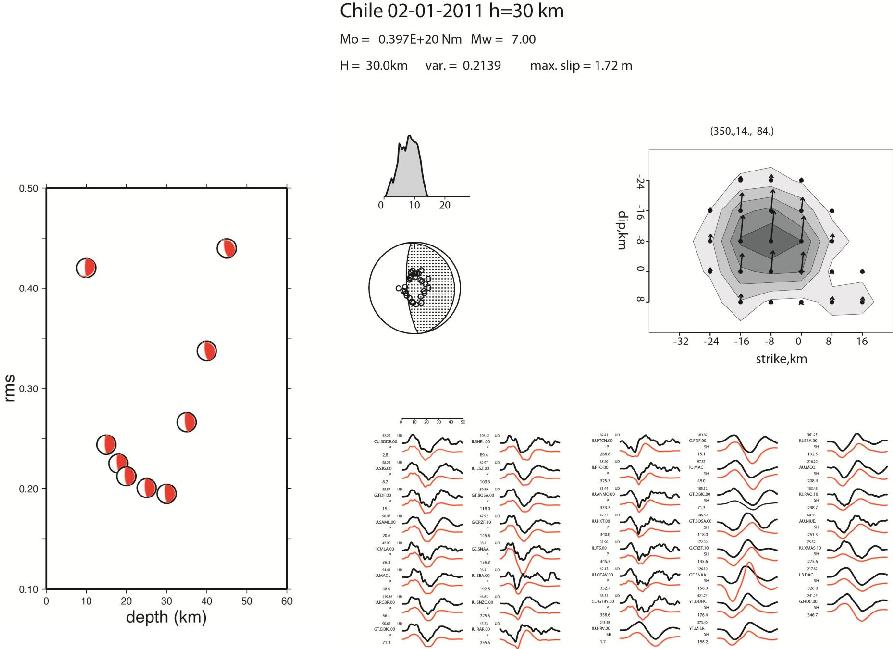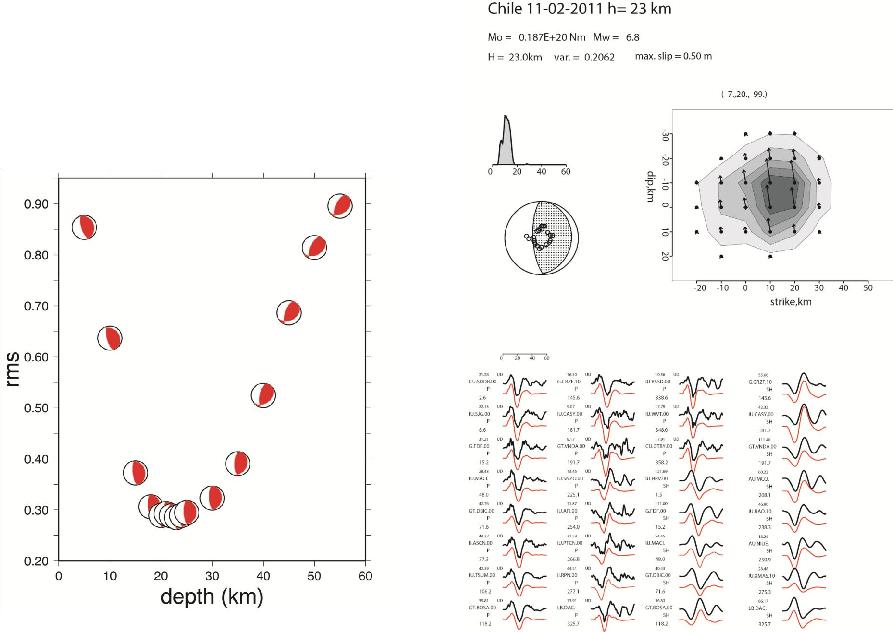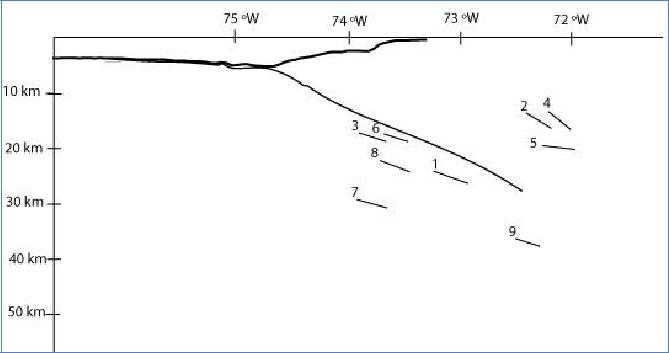Large aftershocks of the Maule 2010 mega earthquake in Central Chile
E. Buforn (1), C. Pro (2), A. Fuenzalida (3), S. Ruiz (4),
and R. Madariaga(3)
1.- Dpt. Geofísica y Meteorología, Universidad Complutense, Madrid (Spain)
2.- Dpt. De Física, Universidad de Extremadura, Mérida (Badajoz, Spain)
3.- Laboratoire de Geologie, Ecole Normale Superieure, Paris (France)
4.- Dpt. De Geofísica, Universidad de Chile, Santiago (Chile)
Last Mega earthquakes in Chile
A different vision:
Only mega earthquakes count
Other M~8 earthquakes Are just late aftershocks or foreshocks
Chile had 3 Mega earthquakes
In the last 100 years!
Aftershocks of the Maule 2010 earthquake
All events from local network
Best relocated aftershocks are very sparse
Relocaction
Rietbrock et al, 2012 |
Fuenzalida et al, 2013 |
Statistics of the Maule Mw 8.8 mega earthquake
Gutenberg Richter of aftershocks
gap
gap
Comparison of geodetic versus Far field inversion
Slip inverted from GPS |
Slip inverted from Far field body waves |
Moreno et al (EPSL, 2012) |
Our inversion |
|
Aftershocks scale very simply with main event
Slip distribution for main event and aftershocks
Conclusions
 The Maule Mw=8.8 earthquake had few aftershocks
The Maule Mw=8.8 earthquake had few aftershocks
 Aftrshocks were sparsely distributed
Aftrshocks were sparsely distributed
 A model of the main event was found that matches
A model of the main event was found that matches  geodetic models
geodetic models
 Rupture of the main event was bilateral with large slip North and South of the epicenter (Constitucion and Arauco)
Rupture of the main event was bilateral with large slip North and South of the epicenter (Constitucion and Arauco)
 Model of rupture is very different from that found with back propagation
Model of rupture is very different from that found with back propagation
 Larger thrust aftershocks occurred in these two patches
Larger thrust aftershocks occurred in these two patches
Variación del buzamiento del plano de falla con la longitud
1 2010/02/27 (Main)
2 2010/02/27
3 2010/03/05
4 2010/03/11
5 2010/03/11 (14:55:30.9)
6 2010/03/16
7 2011/01/02
8 2011/02/11
9 2012/03/25

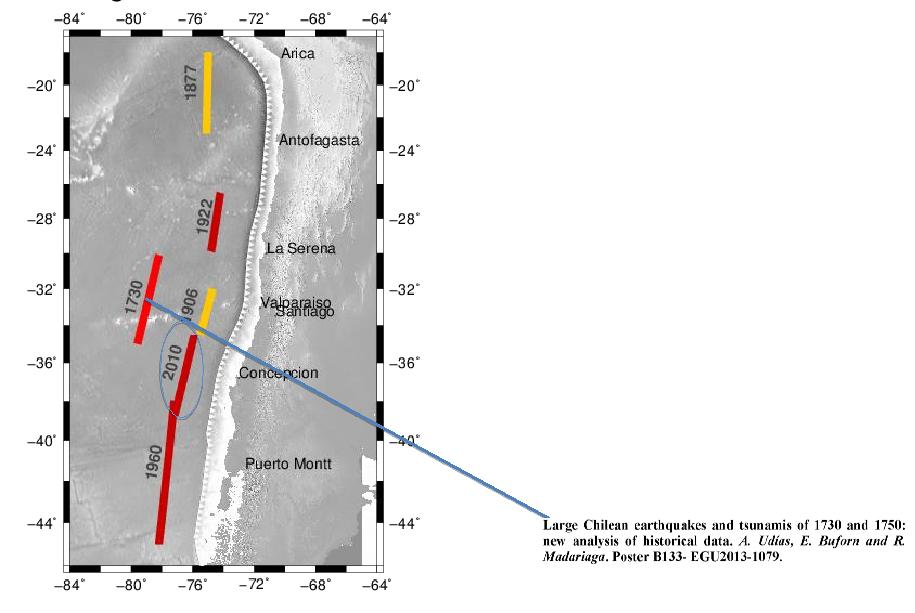
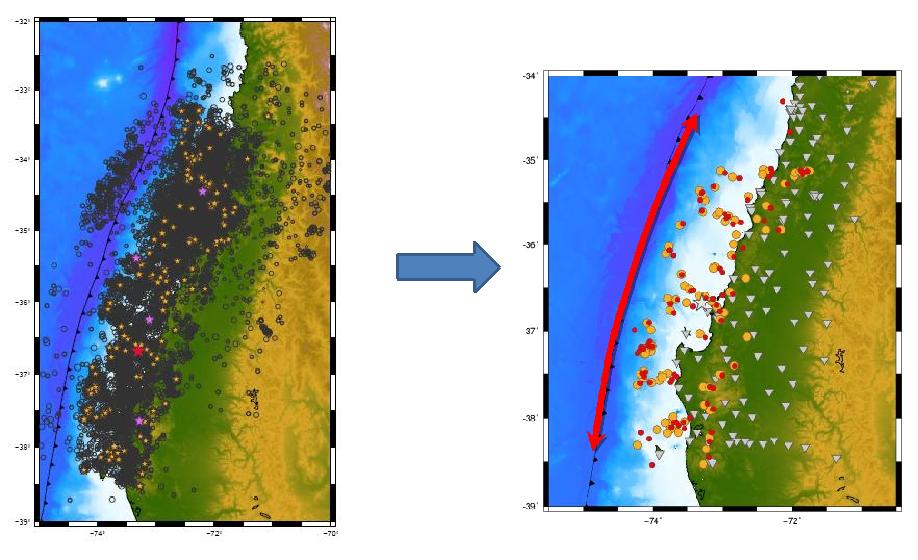
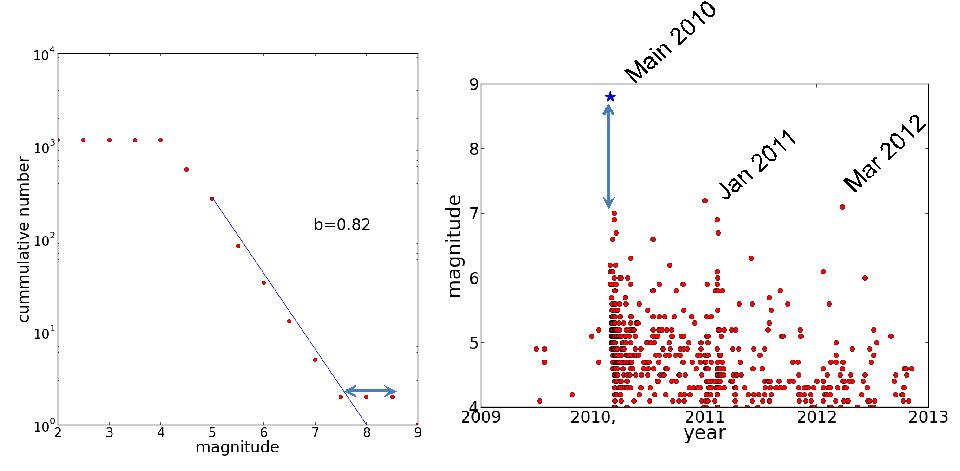
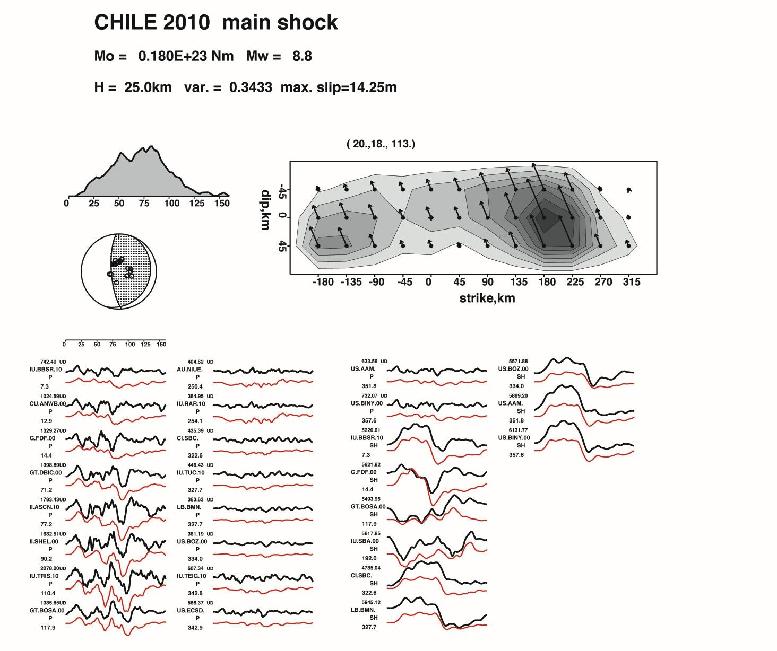
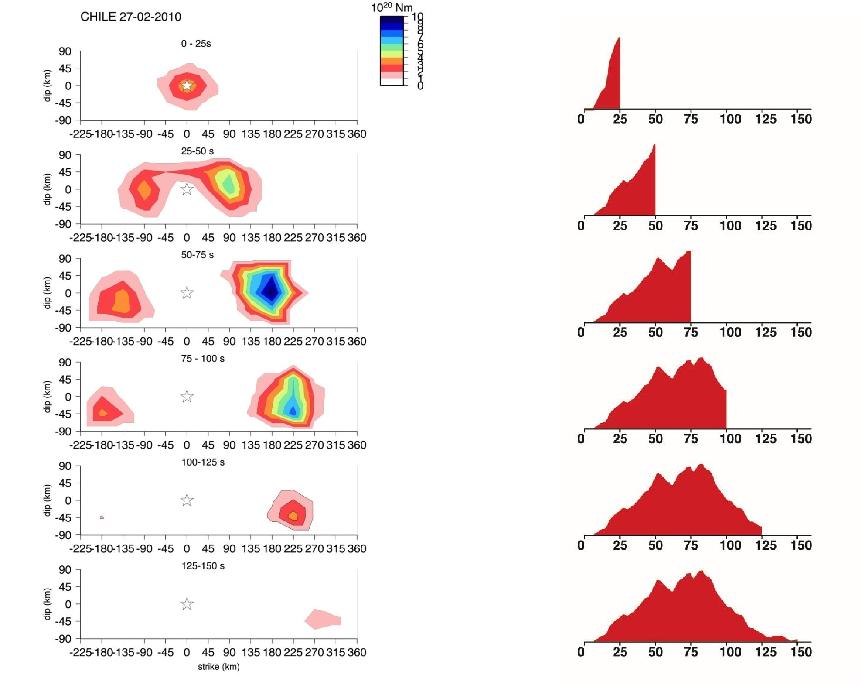
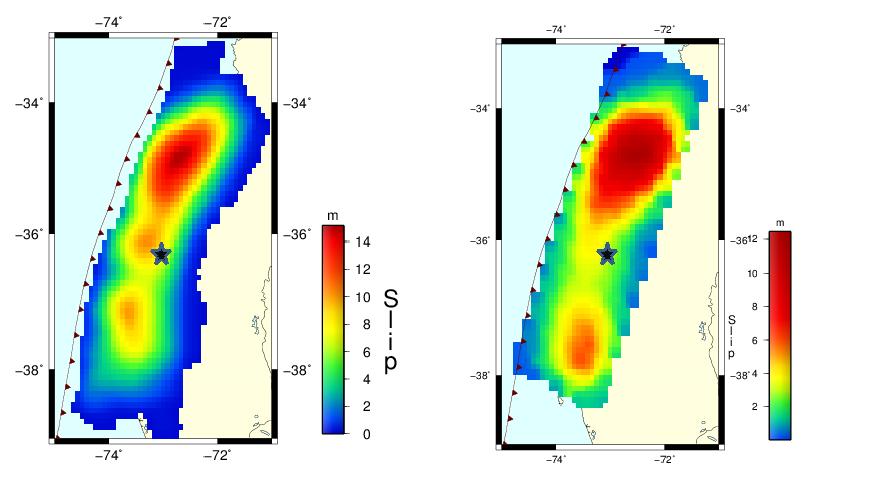
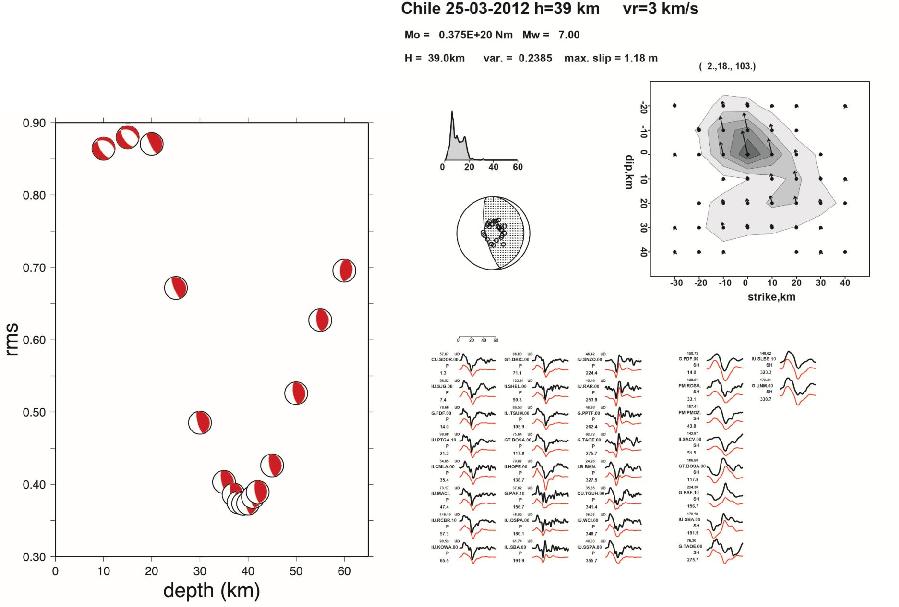
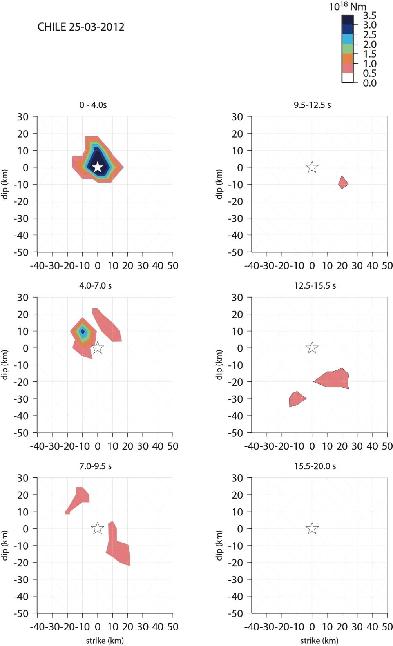
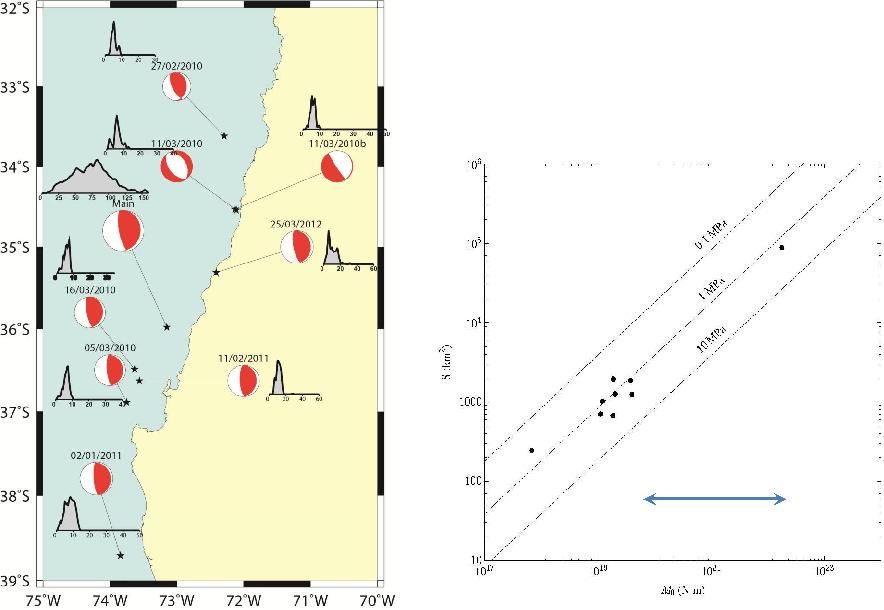
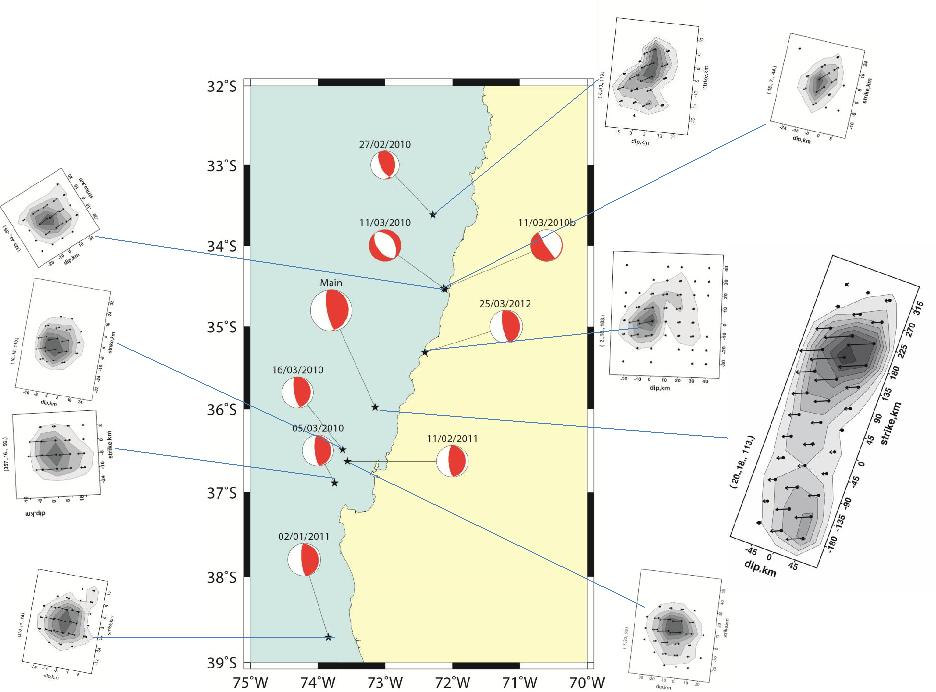

 The Maule Mw=8.8 earthquake had few aftershocks
The Maule Mw=8.8 earthquake had few aftershocks Aftrshocks were sparsely distributed
Aftrshocks were sparsely distributed A model of the main event was found that matches
A model of the main event was found that matches  geodetic models
geodetic models Rupture of the main event was bilateral with large slip North and South of the epicenter (Constitucion and Arauco)
Rupture of the main event was bilateral with large slip North and South of the epicenter (Constitucion and Arauco) Model of rupture is very different from that found with back propagation
Model of rupture is very different from that found with back propagation Larger thrust aftershocks occurred in these two patches
Larger thrust aftershocks occurred in these two patches